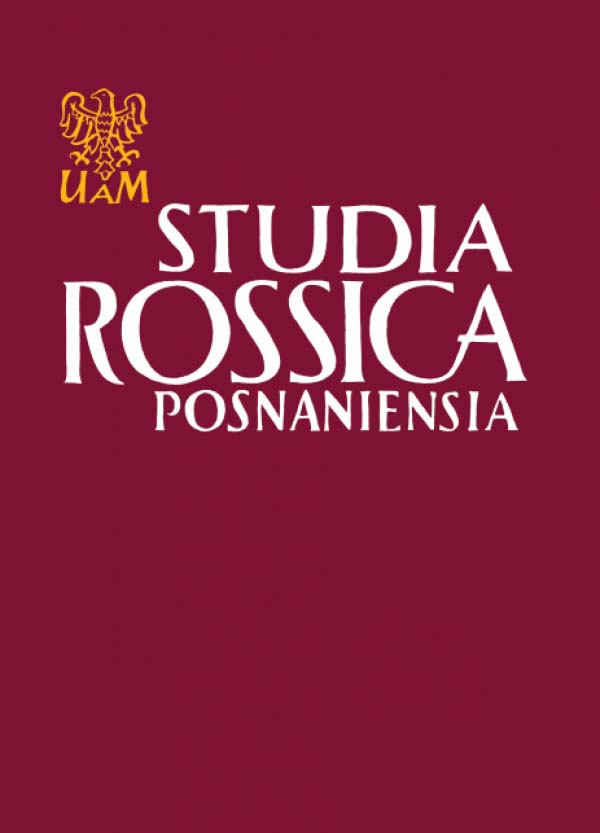OPOWIEŚCI BIELKINA A. S. PUSZKINA JAKO CYKL NOWELISTYCZNY
A. S. PUSHKIN’S TALES OF BELKIN AS A SHORT-STOKY CYCLE
Author(s): Teresa Agnieszka KaczkowskaSubject(s): Studies of Literature, Philology
Published by: Uniwersytet Adama Mickiewicza
Summary/Abstract: The Tales of the Late Ivan Petrovich Belkin are the first finished prose work of A. S. Pushkin. It is a cycle of five short stories. They constitute a whole and were written in September and October of 1830. Each of these short stories constitutes a completely separate unit from the point of view of subject, composition and style; each of them has its own characteristic features. The structure of narration of Tales of Belkin is characterized by the dependence among the publisher (A. P.), Belkin’s biographer, Belkin, narrators and heroes. Belkin assumes the role of the author of the cycle, not as a narrator but just as a fictitious author. The whole of the short story cycle bears the seal of Belkin’s individuality which is presented as early as in the preface of the publisher to the reader. Who, in fact, is Belkin? — the critics have been long since rankled by that problem and it is a subject of con tinuous research. Discerning analysis of the structure of narration of the whole cycle allows us to assume that Belkin from the letter of the publisher is a literary code for the narrators of each of the short stories and is the exponent of their attitude to the world presented. The world as presented in the stories is the world of the narrators who are the witnesses of particular events or are their participants or со-heroes belong ing to the same social circle. Thanks to this the responsibility for the plot of the stories, for their moral contents and realism is just their own responsibility. When introducing the system of narrators Pushkin suggests certain condition of conversation with the reader. Such author’s mystification should convince him about the authenticity of the stories. The introduction of the narrators indicates the way in which the composition was adopted and is closely connected with the technique of multiple point of view. Each change in the narrative point of view is dependent on the “situation” of the narrator in the face of other characters, his place in time and space as well as his relation in the face of the world of his inner experiences. Particular views on the world constitute an immanent, closed circle in each of the five short stories but when arranged in a cycle they give a broad and dynamic picture of Russia of the 20s. Only when viewing the whole of the cycle one can capture a kind of hierarchy in each of the stories separately. The framework of the construction for all the stories told are the mottoes arranged on a similar principle as a whole narrative structure, they in a way are the ornaments of the stories and make them to constitute a cycle at the same time showing the real author, Pushkin to the reader. Each of the five short stories is not a sensu stricto tale because it has only some elements whereas the sum total of all the features is the evidence that the whole cycle has a character of a tale. Therefore this is one more symptom being the evidence of the uniformity of Tales of Belkin. The numerous endeavours of the author as presented by Pushkin in The Tales of the Late Ivan Petrovich Belkin create deliberate and interesting construction in which not so much the attractiveness of the plot but just excellent course of narration has the greatest power of esthetic effectiveness on the reader.
Journal: Studia Rossica Posnaniensia
- Issue Year: 9/1977
- Issue No: 1
- Page Range: 3-14
- Page Count: 12
- Language: Polish

